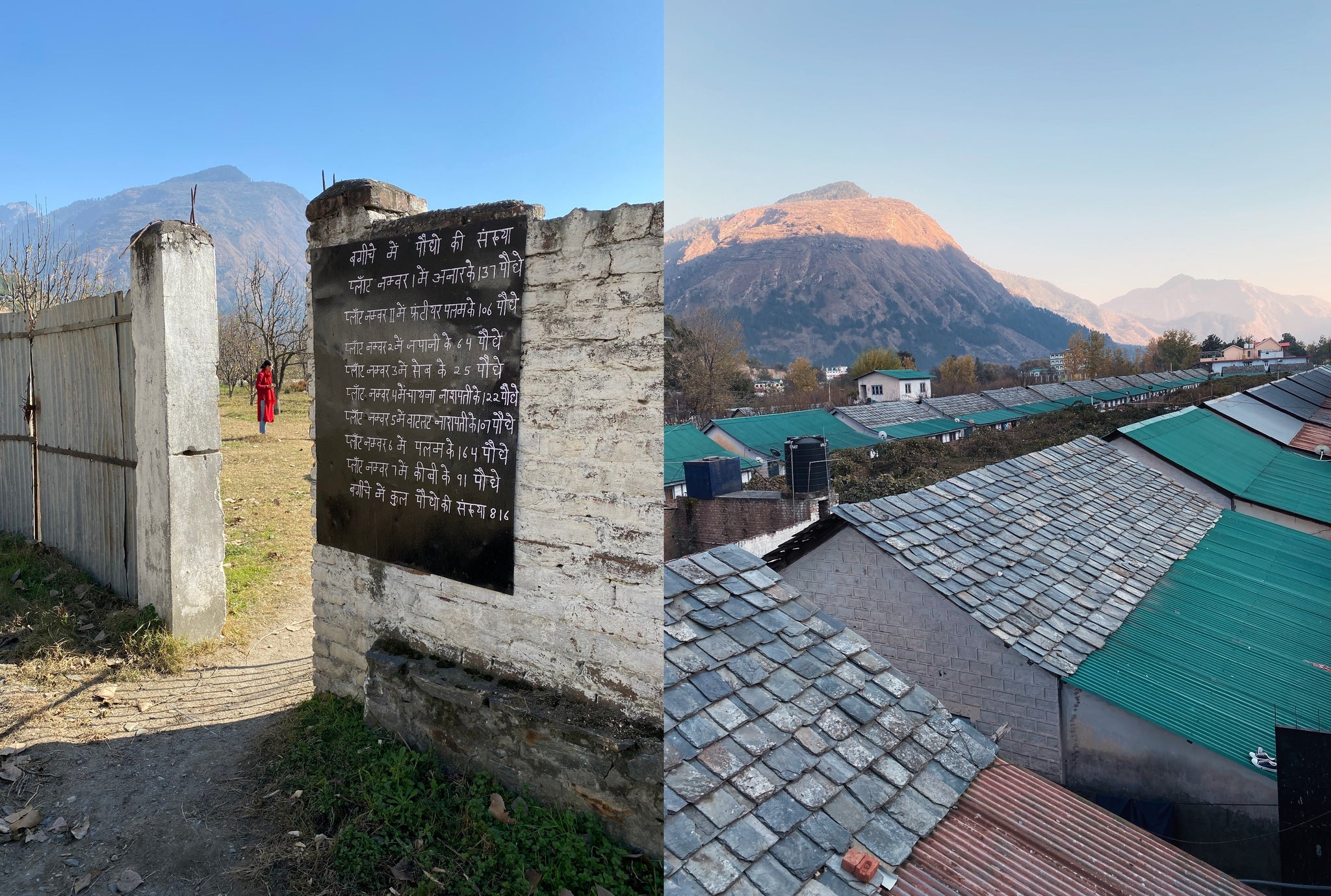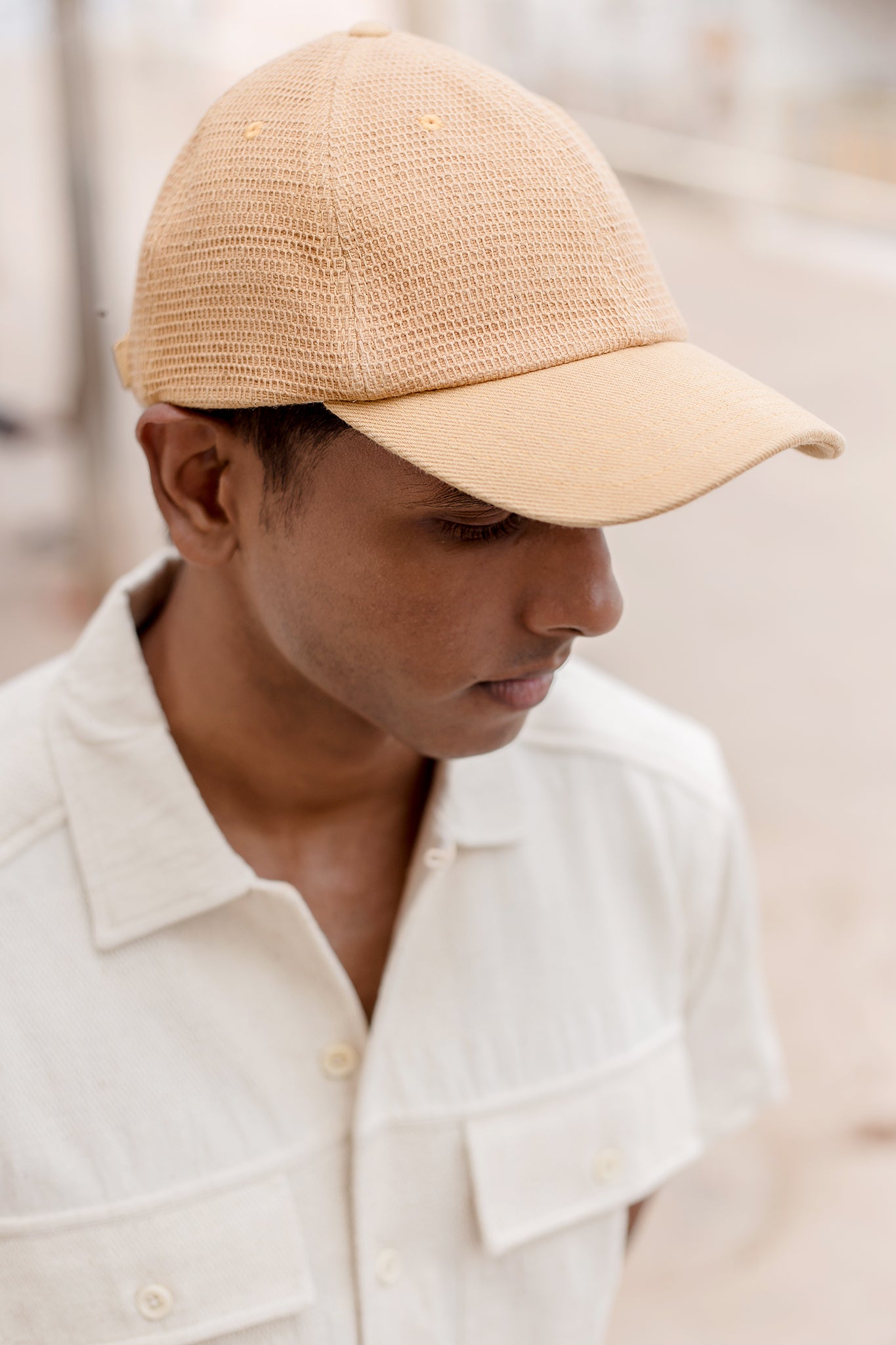In a Himalayan mountainside village in Northern India where weaving has been practiced for over 5,000 years, we collaborated with a unique handloom weaving cooperative that was established in 1944. Our partnership with the collective is a very special one. All of our wools come from this workshop and we also developed a special camo design. Flying into the region is a sight to behold, with a view of a snow-capped Himalayan mountain range in the near distance. The dramatic landscape is even more welcoming with a small, open air airport that only operates in the morning hours due to unpredictable weather patterns.
Flying into the region is a sight to behold, with a view of a snow-capped Himalayan mountain range in the near distance. The dramatic landscape is even more welcoming with a small, open air airport that only operates in the morning hours due to unpredictable weather patterns.

When the founder passed at age 50, the land was donated with a goal to save the local craft. It is now run by his granddaughter and she operates the cooperative which is made up of 60% women, 34 looms and serves 1,000 families around the village.
With a cooler climate, they specialize in hand-spun wool. The traditional wooden looms are manual depending on the width of fabric and number of meters and weavers achieve approximately three warps a day. Weaving for their local store, they focus on traditional patterns, which almost resembles intricate embroidery. Designs and colors are unique to specific regions and precision is essential of every stitch.
 Dedicated to compliance and transparency, every aspect of the society is meticulously organized –– every worker carefully documented and every yarn spool systematically stored. The cooperative is also dedicated to sustainability and there is less than 2% waste in the entire facility. Everything is recycled, from loose threads which are saved as pilings for mattress and pillows to dry cleaning water waste which is properly filtered and ethically drained back into the land.
Dedicated to compliance and transparency, every aspect of the society is meticulously organized –– every worker carefully documented and every yarn spool systematically stored. The cooperative is also dedicated to sustainability and there is less than 2% waste in the entire facility. Everything is recycled, from loose threads which are saved as pilings for mattress and pillows to dry cleaning water waste which is properly filtered and ethically drained back into the land.

Committed to the welfare of its members, the organization provides a clean and healthy life, including healthy wages, working hours and accessibility to schools for the children. They take it a step further by also providing housing to those in need for a nominal fee ($5/month).
The sustainable community also maintains ample farmland on the property where food is grown and sold to local villagers for additional income. There are also enclosed areas for farm animals. The garden and orchard are meticulously organized, with every tree identified which include spinach, sugar cane, plums, pears, persimmons and pomegranates to name a few.  Videographer: Rahul Jain
Videographer: Rahul Jain
Words/Photos: Michele Janezic










Leave a comment
This site is protected by reCAPTCHA and the Google Privacy Policy and Terms of Service apply.